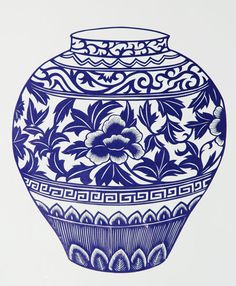If you have ever taken a trip to the Far East, whether it be China or India on the Asian continent, the Korean peninsula, or the island nation of Japan, you know what an amazing place this region of the world can be. So amazing that you might want to recreate part of it in your own home. There are many aspects that you can incorporate into existing interior designs, or you can choose to start over and convert your home into the oriental ambiance you seek. Here are a few ideas to get you started.
Minimalistic
Asian styles lean more towards the minimal side of the spectrum. There are not a lot of decorative items in a Chinese-inspired design, and even less in a Japanese style. That is not to say these styles are not without decor. Most of them tend to incorporate art on the walls or in the furniture. The point is that Asian designs prefer open spaces that balance artistry with necessity. If you are wanting to make some easy and inexpensive changes to obtain that feel, some oriental paintings and some wallpaper, maybe a vase or two, can lead you in the right direction. If it is a bedroom you seek to alter or your entire house, get started by decluttering. Be prepared to bring in new furniture, repaint the walls, and add moldings to the walls and ceilings. This will be the first step in giving your home that Asian character.
Balance
As mentioned above, Asian designs seek to find the balance between nature and function to create a serene atmosphere for the inhabitants. The use of live greenery, whether it be a tall palm or a small bonsai tree, is abundant as is its use in decorative artwork. Japanese styles can include bamboo on the walls or as window blinds; bathrooms can combine sharp angles and smooth curving surfaces in the same space, some may even include small plants growing in special beds for that added nature feel. Oriental designers like to mimic landscapes by juxtapolating living plants with colors, shapes, and flows of room features. This could give you a sense of existing with nature than secluded from, adding to the Zen-like sense you get from these countries.
Color
Color schemes are chosen with care. Some attempt to match the colors found in nature, again creating that balance, but some are more subdued with simple whites or creams as the central theme. The wood used in trimming around the home can be left their natural hue or painted darker to contrast against the simple walls. Chinese designs feature more artistry through murals on the walls, patterns in the rugs, or shapes of the furniture with more purples or reds or golds incorporated into the color palette. Accents of colors can be both visually appealing and create that calm you found lacking in Western society. By mixing colors in particular ways, you can create a space of harmony and peace.
Sounds and Aromas
Not only do Asian styles aim to create a tranquil living space through visual aspects, sounds are included to emphasis this. The flowing or trickling sounds of water are very calming. This can be used to your advantage by placing a couple of water features in the room you want to turn into your balanced and stress-free space. If you can afford to do so, you could consider creating a small pond with waterfalls in the backyard. If you are serious about recreating the oriental feel in your home, you could even consider converting a room into a garden room. With a large indoor water feature and greenery surrounding it, this room would be perfect for meditation.
The odors you breathe in can have an effect on your mood. Some of the plants chosen as part of the room’s or house’s interior design give off a fragrance that elicit calming effects on the brain (this is called aroma therapy). Candles are also used to enhance this effort, blending the aromas together into one tranquil smell that can relieve you of your cares. Buying candles might be the easiest thing you can do to change your house; definitely one of the most inexpensive changes you can make right away.
Geometrics
Asian designs are very geometric; at least the ones styled after Japanese homes. There are a lot of straight lines on the walls and in the windows. There are sharp angles in the furniture and along the ceilings. Lighting fixtures tend to resemble spherical and rectangular lanterns, not only blending them into the natural look of the room but also being reminiscent of the country’s ancient past. Chinese looks tend to have more curving features such as entryways or furniture. Symmetry is created in both the patterns on wall art panels and the placement of those panels in the room. The layout of a room will also be symmetrical, keeping with Feng Shui practices (energy flowing through a space to create positive feelings and happiness). You can start to improve the energy flow in your space now just by simply rearranging the furniture in that space. To get the full effect of this energy in your home, you will have to maneuver everything to face or sit at the proper direction according to the principle of Feng Shui.
It may take some time to recreate the feeling you had during your visit to Asia. Start out simple with a change of color scheme on the walls and removing materialistic things from your living space. Replace furniture one at a time, or redo entire rooms one at a time. Work diligently to achieving your goal and you will have that serene center you seek.

